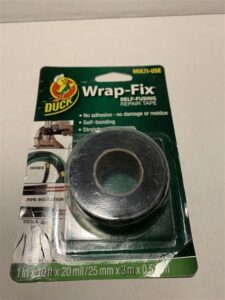Explore fast fix cellular repair techniques, their benefits, implementation steps, and challenges, while comparing them with traditional methods for effective cellular restoration.In today’s fast-paced world, having a reliable and efficient solution for cellular repair is essential. Enter Fast Fix Cellular Repair—a revolutionary service that promises to restore your devices to their optimal condition with unparalleled speed and effectiveness. This innovative approach leverages advanced techniques to address common issues, ensuring your smartphone or tablet is back in action in no time. In this article, we will explore the various methods employed in Fast Fix Cellular Repair, provide a step-by-step guide for implementation, and compare it with traditional repair solutions. We will also address common challenges faced during the process and highlight the numerous benefits of choosing Fast Fix for quick cellular restoration. Stay tuned as we dive deeper into this cutting-edge service designed to meet the demands of today’s tech-savvy consumers.
Understanding Fast Fix Cellular Repair Techniques
In the realm of cellular repair, fast fix techniques have emerged as innovative solutions designed to expedite restoration processes. These methods utilize advanced technologies and strategic approaches to address cellular damage swiftly and effectively.
One of the primary techniques involves the use of automation and software diagnostics, which allow for rapid identification of issues within cellular structures. By employing cutting-edge scanning equipment, technicians can pinpoint areas of concern almost instantaneously. This not only reduces the time spent in diagnosis but also ensures that repairs are targeted and efficient.
Another key component of fast fix techniques is the application of specialized materials that promote quicker healing. These materials often possess properties that enhance cellular regeneration, enabling faster recovery times compared to traditional repair methods. By integrating these materials into repair procedures, the overall effectiveness of the process is significantly improved.
Moreover, training and expertise play a critical role. Professionals employing fast fix methodologies are often well-versed in the latest advancements in the field. Continuous education ensures they stay ahead of the curve, allowing them to apply the most effective techniques to their repair work.
In summary, understanding fast fix cellular repair techniques involves recognizing the importance of rapid diagnostics, advanced materials, and skilled expertise. These elements collectively make up the foundation for efficient cellular restoration solutions that cater to the fast-paced demands of modern repair needs.
Step-by-Step Guide to Implementing Fast Fix Methods
Implementing fast fix methods for cellular repair can streamline your restoration process, significantly reducing downtime. Here’s a detailed step-by-step guide to help you efficiently apply these techniques:
- Assess the Damage: Start by evaluating the extent of the cellular damage. Check for visible cracks, operational issues, or connectivity failures.
- Gather Necessary Tools: Collect all required tools and materials specific to the fast fix approach. This may include adhesive solutions, repair kits, or software diagnostics.
- Power Down the Device: Ensure the device is completely powered down to prevent any electrical complications during the repair process.
- Initiate Repair Procedures: Follow the predefined fast fix procedures tailored to your specific cellular device. This might include applying quick-dry adhesives or using efficient replacement parts.
- Test for Functionality: Once repairs are completed, power on the device and test all functionalities to ensure that the fast fix has been successful.
- Follow Up: Monitor the device over the following days to catch any issues that may arise after initial repairs, making additional adjustments if needed.
By following these steps, you can effectively leverage fast fix methods, ensuring a more efficient and prompt cellular repair process.
Comparing Fast Fix with Traditional Cellular Repair Solutions
When it comes to cellular repair, methods vary significantly between conventional approaches and emerging techniques like fast fix. Understanding these differences can help in making informed decisions about which method to employ based on the situation and requirements.
Fast fix techniques prioritize speed and efficiency, enabling quicker restoration of cellular functionality. Unlike traditional methods, which often involve lengthy diagnostic processes and comprehensive repairs, fast fix focuses on rapid assessments and targeted interventions. This approach significantly reduces downtime, making it particularly advantageous in scenarios requiring immediate attention.
Conversely, traditional cellular repair solutions generally involve a more systematic approach, where each layer of cellular damage is meticulously addressed. This thoroughness can lead to better long-term outcomes but often requires more time and resources. In contrast, the fast fix methodology is designed for rapid execution, appealing to those in need of swift resolutions, especially in urgent situations.
| Criteria | Fast Fix | Traditional Repair |
|---|---|---|
| Time Required | Quick (fast fix methods often enable same-day services) | Extended (can take several days or weeks) |
| Cost | Generally lower due to reduced labor | Higher, given the detailed processes and diagnostics involved |
| Thoroughness | Targeted and efficient, but may miss underlying issues | Comprehensive, ensuring all components are fully restored |
| Application Scope | Best for minor repairs and urgent situations | Ideal for complex issues requiring deep intervention |
Ultimately, the choice between fast fix and traditional cellular repair solutions hinges on factors such as urgency, complexity of the problem, and budgetary constraints. For those needing immediate results, fast fix methods provide a valuable alternative, while traditional solutions remain essential for more complicated issues that necessitate thorough repair procedures.
Common Challenges in Fast Fix Cellular Repair and Solutions
Despite the advantages of fast fix cellular repair methods, several challenges can arise during the process. Understanding these obstacles and their solutions is vital for achieving efficient cellular restoration. Here are some common challenges and potential solutions:
| Challenge | Description | Solution |
|---|---|---|
| Lack of Specialized Tools | Some fast fix techniques may require tools that are not readily available. | Invest in a comprehensive repair kit that includes all necessary tools for cellular repair. |
| Insufficient Training | Technicians may not be fully trained in fast fix methods, leading to improper application. | Provide additional training sessions and resources focused on fast fix techniques. |
| Inconsistent Quality of Materials | Using substandard materials can affect the effectiveness of the repairs. | Source materials from reputable suppliers to ensure quality and compatibility. |
| Time Constraints | Rushed procedures may lead to mistakes or overlooked steps. | Allocate enough time for repairs, and encourage a thorough approach over speed. |
| Customer Expectations | Clients may have unrealistic expectations regarding the speed and outcome of repairs. | Communicate openly with clients about potential outcomes and timelines. |
By addressing these challenges with the suggested solutions, technicians can enhance their proficiency in fast fix cellular repair and provide better results for their clients. Implementing these strategies will ensure smoother operations and improved customer satisfaction in the long run.
Benefits of Using Fast Fix for Quick Cellular Restoration
Implementing fast fix techniques for cellular restoration offers several advantages that can significantly enhance the repair process. Here are some key benefits:
- Speed: As the name suggests, fast fix methods are designed to expedite the restoration process, allowing for quick recovery and minimal downtime.
- Cost-Effectiveness: Many fast fix solutions often require fewer resources and materials than traditional methods, leading to reduced repair costs.
- Convenience: Fast fix techniques are often simpler and more user-friendly, making them accessible for both professionals and DIY enthusiasts.
- Lower Risk of Damage: The rapid application of fast fix strategies generally minimizes the risk of further damage during the repair process.
- Versatility: These methods can be applied to various types of cellular issues, making them a flexible option in different situations.
| Benefits | Description |
|---|---|
| Speed | Rapid restoration reduces downtime. |
| Cost-Effectiveness | Lower materials costs compared to traditional repairs. |
| Convenience | User-friendly and accessible repair techniques. |
| Lower Risk of Damage | Minimizes chances of exacerbating existing issues. |
| Versatility | Applicable to a wide range of cellular problems. |
In conclusion, the advantages of utilizing fast fix methods in cellular repair make them an appealing choice for those seeking effective and efficient solutions for quick restoration.
Frequently Asked Questions
What is fast fix cellular repair?
Fast fix cellular repair refers to advanced techniques and treatments that aim to quickly restore cellular function and health, often used in regenerative medicine.
What are the benefits of fast fix cellular repair?
The benefits include accelerated healing, improved cellular function, and the potential to reverse age-related damage or injuries in cells.
How does fast fix cellular repair work?
It typically involves using therapies that stimulate cell regeneration, such as stem cell therapy, PRP (platelet-rich plasma), or other biologically active substances that promote repair.
Who can benefit from fast fix cellular repair?
Individuals suffering from chronic injuries, age-related decline, or those looking to enhance their recovery from physical exertion can benefit from these techniques.
What are some common methods used in fast fix cellular repair?
Common methods include stem cell injections, exosome therapy, and PRP treatments, all aimed at enhancing the body’s natural healing processes.
Is fast fix cellular repair safe?
Generally, when conducted by qualified professionals, fast fix cellular repair is considered safe, but like any medical procedure, it carries some risks and requires proper consultation.
How long does it take to see results from fast fix cellular repair?
Results can vary, but many patients may begin to notice improvements within a few weeks, while full benefits can take several months depending on the treatment.





